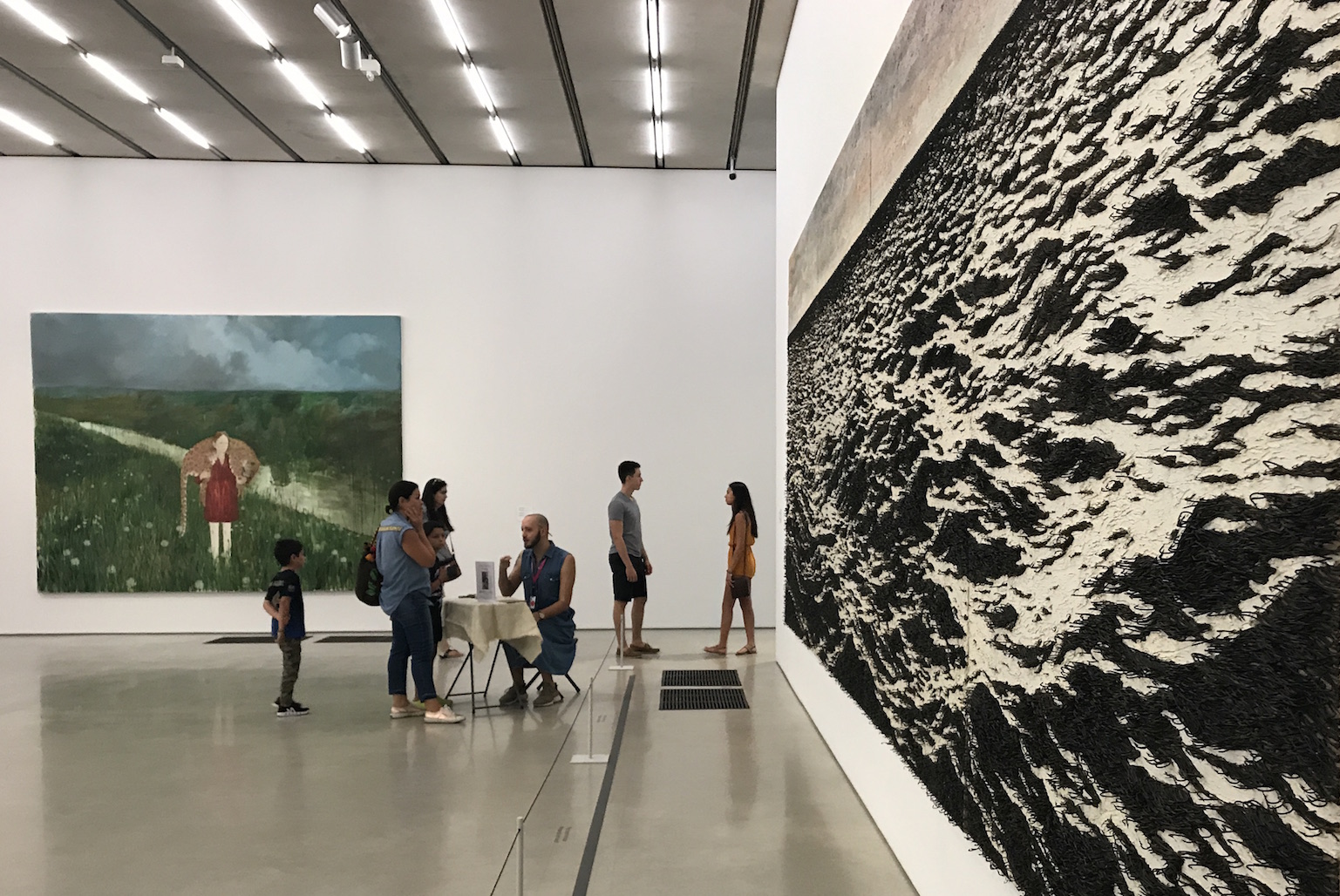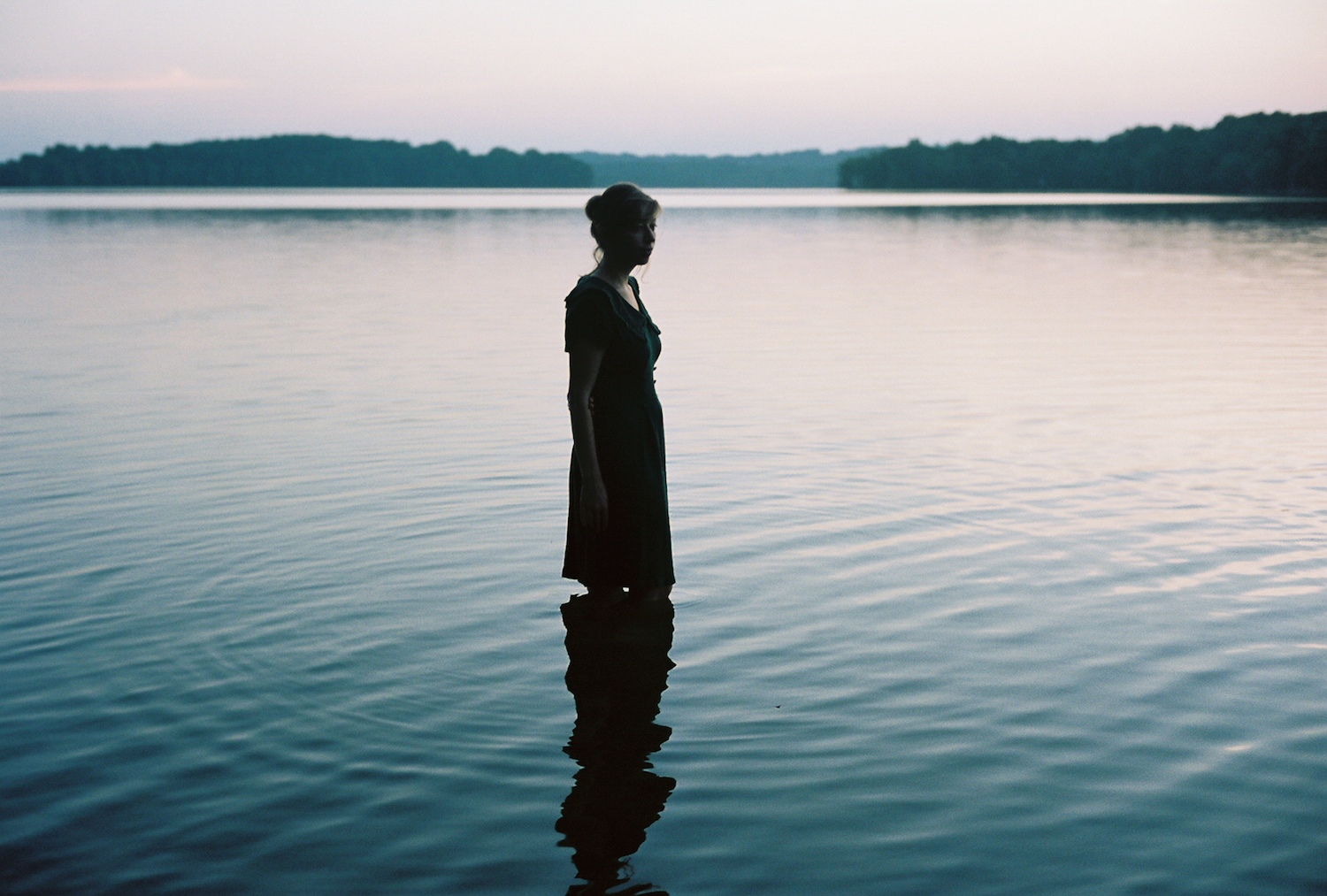How Margaret Rorison is Building a Culture of Experimental Film in Baltimore, One Screening at a Time by Nicole Clark
A big part of Margaret Rorison’s winter, in 2012, was spent driving through Baltimore’s West Side, capturing the abandoned and overgrown parts of town on a 16mm film reel. The grainy, syncopated effects of the vintage film created a distinct visual language and energy for her film SCANSION, mirroring the dark emotive vibe Rorison had of her hometown at the time.
“At the time, I was feeling haunted by Baltimore. The landscape was starting to become very emotional for me. I wanted to have a memory of that, and a film about it,” Rorison said.
Rorison is a constant in a continually shifting experimental film scene in Baltimore City. Since 2011, the Baltimore-native filmmaker/curator has organized over 50 time-based performances and screenings for the city’s enjoyment and filmic edification via partnerships, fundraisers, hard-earned artist grants, and – perhaps most importantly – a little help from her friends.

What started as elaborate film screenings hosted out of Rorison’s living room, has turned into a prolific experimental film series, known as Sight Unseen. The monthly series has run since 2012, featuring 170 local and visiting filmmakers. Along with its run-time, part of what makes the series unique is its focus on time-based work that explore innovative ways of working with image, sound and narrative. While some Baltimore events and screening series such as The Transmodern Festival, LIGHTHOLE! (curated by Victor F de M Torres), Magic Eye (curated by Matt Porterfield and Mary Helena Clark), and Secret Psychic Cinema (curated by Meredith Moore) feature experimental film and video works from time to time, Sight Unseen is the only monthly series dedicated solely to this experimental cinema genre.
After five years of monthly venue jumps, the previously-nomadic series found a permanent home in June at the newly renovated Stavros Niarchos Foundation Parkway Theater, home of the Maryland Film Festival (MdFF), and destination for Baltimore’s devout cinephiles.
“Our mission is to make this a special movie going place. We partnered with Meg to help us with that mission,” Jed Dietz, Founding Director of MdFF and President of the Producer’s Club of Maryland, said. The Parkway reopened its doors in May as a cinema palace for the first time since the late-70s, with a mission to curate bold programming and showcase films that provide audiences with a fresh and immersive new window into the art form. “She is an integral part of our creative programming at the Parkway.”
Rorison has attended meetings organized by the Film Labs network, presented work at microcinemas and film festivals, attended residencies, and booked short tours around the U.S. and in Europe presenting her work – all of which has allowed her the opportunity to meet new filmmakers and programmers, and learn how other filmmakers are making new work and finding the space to exhibit others’ work.
“The microcinema and Film Labs network are a very supportive, innovative and experimental community,” Rorison said. “It is a community of filmmakers who work together to share ideas and resources, and provide platforms to present handmade films and filmmakers who are creating their own language logic through the moving image presentation.”
Rorison entered the film world through a creative wormhole she discovered during artistic experimentation. A painter and poet in her early years, she felt limited by both. The absence of direct visual elements in poetry felt restrictive, and the inability to explore the progression of time via painting left her wanting multiple frames and moving images.
 Image still of film, vindmøller
Image still of film, vindmøller
She encountered her preferred medium – 16mm and the Bolex camera – in 2011, through an Intro to Filmmaking course that she took as a graduate student at MICA taught by cinematographer Allen Moore. A silent film gauge introduced in 1923, 16mm tends to generate images with dynamic range, a beautiful grain structure, and an intimacy in color and tone. Editing the film requires a learned series of movements, weaving the strips through a maze of knobs and clamps, and physically cutting, then reassembling perforated frames to create the desired narrative.
“I became very excited when I was first introduced to film editing on the Steenbeck, which is a flatbed editing machine. I loved the directness and physical nature of working with film. It reminded me a lot of painting,” Rorison said. “The entire process is ritualistic – from the process of shooting with 100 inch spools of film on a hand cranked camera, to the ritual of setting up for projection: pulling out the projectors arms, threading the film through the path like a sewing machine, the unique trancelike sound of the projector’s motor and then, turning on the light beam that would eventually pass through the emulsion and magnify the image.”
Though introduced as a less expensive alternative to 35mm film when it was first released in the early 20th century, today the film’s vintage heritage makes it a pricey medium. Not to mention the required crank on the device every 30 seconds to wind the spring, and keep it running. “The expense of it predetermines the length of my films, most times,” Rorison said. Recently, she’s been delving into longer-form films with the help of a few recent grants, such as a 2016 Rubys Artist Project Grants in media and performing arts, a 2016 Maryland State Arts Council Individual Artist Award, and a generous donation of 16mm film through an award won at the Ann Arbor Film Festival for Best Cinematography for her 2014 film, vindmøller.
Rorison says that trial-and-error experiments have allowed her to accumulate a broad range of expertise and to follow her intuition into uncharted territory. For instance, the first time she projected one of her films was in January 2011 during a house concert she hosted (a.k.a. musicians in Rorison’s living room). She spent hours sculpting a soundtrack made from field recordings in Brooklyn, the sound of the actual film being projected by the 16mm projector, and lucid narrations of her ageing grandfather for her short film, “Gowanus Haze.” She didn’t even watch the film as she created the unconventional soundtrack mix.

“They just married well,” Rorison said. “I believe in my intuition, and try to respect it, to work from it.”
She found her creative home in Baltimore’s artist and volunteer-run communities like The Red Room Collective where she orchestrated experimental music and film shows from 2011-2015. Her friend, Lawrence Kumpf (who at the time was a volunteer at Issue Project Room) played a large role in introducing her to the avant-garde time-based work. When she lived in NYC from 2006-2009, he would sneak her and her friends into live performances by Merzbow, Joan La Barbara, Bruce McClure, Tony Conrad, and Kaffe Matthews. These eclectic and inventive communities scratched the artistic itch for her at first, but eventually, she wanted to connect with people who were interested in focusing on having a dedicated film series in Baltimore.
“When I moved back to Baltimore in 2009, after living in NYC for three years, working as a photographer’s assistant and an intern for documentary filmmakers [Stanley Nelson and Thomas Allen Harris], I noticed that Baltimore was a city with a large presentation of experimental music and performance, but I felt that there was a gap in experimental film programming at the time,” Rorison said. “I wanted to bring filmmakers to Baltimore, to share new works with the community or artists and experimenters, that would also benefit local teachers and students of film, and expand their exposure to this kind of cinema.”
 Image still of film, DER SPAZIERGANG
Image still of film, DER SPAZIERGANG
In 2012, she wrote a proposal for Sight Unseen with the help of two other newfound filmmaking friends. The trio submitted it to MICA’s graduate awards program, Launch Artists in Baltimore (LAB), and won a $10,000 grant to launch the contemporary film screening series. She was co-awarded another LAB grant in 2014 with MICA grad Chris Chen, to start a series of filmmaking workshops in Baltimore as a part of the Sight Unseen programming, and a 2015 Grit Fund Grant. In addition to these grants, Sight Unseen has partnered with The Robert W. Deutsch Foundation, The Baltimore Museum of Art, and ran a fundraising campaign in 2014 to help the series continue its programming.
With funding in hand and Rorison at the helm, Sight Unseen has introduced a diverse range of Baltimore communities to alternative modes of the cinematic media, while welcoming both established and emerging artists to Baltimore to showcase contemporary and historical time-based art. She’s brought in artists like Los Angeles-based filmmaker, Amy Halpern, who has extensive knowledge about lighting and cinematography and has worked on many Hollywood and independent feature films as gaffer and/or cinematographer, including Charles Burnett’s My Brother’s Wedding, and Pat O’Neill’s Decay of Fiction. This screening was in collaboration with MICA – Amy visited the undergraduate film center the following day to present her work and share her experiences with students. Radical animator and educator, Kelly Gallagher presented an inspiring program in November, which explored and addressed important histories of resistance and rebellion.
And in 2013, Rorison orchestrated a presentation of work by Richard Tuohy and Dianna Barrie, two experimental film artists who run Nanolab, a hand-processing film lab in a small town in Australia. In addition to a screening of their work, the two taught a day-long workshop at Full Circle Photo sharing their hand-processing technique, Chromaflex.
 Sight Unseen emulsion making workshop
Sight Unseen emulsion making workshop
Rorison’s resume boasts a laundry list of local, national, and international cinematic experience that can take her, and her films anywhere. When I sat down to talk with Rorison, she’d just returned from filmmaking residencies in Barcelona and Berlin, and was preparing to fly to New Orleans the next day for a screening of her film Memory of August at the New Orleans Film Festival (which, by the way, won a Special Jury Award for Best Experimental Short) all the while, hustling to get November’s Sight Unseen screening at The Parkway planned and promoted.
Despite a growing international career, Rorison continues to choose Baltimore as a physical and creative home base. She has a penchant for nostalgia, and proximity to home feeds her fascination with life’s transience – that which is here today, gone tomorrow, but somehow never entirely absent from memory. And that wistful melancholy, which ebbs and flows throughout the course of her hometown interactions, feeds her filmmaking.
“I use filmmaking to understand the landscape around me. It is a means to document experience and sculpt memory, and a way to cultivate connection and an articulation of myself.”
 Image still of film, Memory of August
Image still of film, Memory of August
Her films The Waiting Sands and The Birds of Chernobyl are about her late grandfather, an artist himself and source of inspiration and creative direction for Rorison. Waiting Sands was shot while he was in the hospital, and feature the final hours of her grandfather’s life via scenes of the natural landscape that surrounded him – a single shot of the harvest moon, shifty tree branches and fanciful clouds document his final breaths.
This year and the next promises to bring many firsts for the filmmaker/curator. Her 2016 Rubys Artist Grant is supporting her work on Restoration of a Memory, a silent short film, to be shot in 16mm, which documents the architectural landscape, history. and formal beauty of Baltimore. It is set to be finished in Spring 2018.
As Rorison continues to balance an existence between international film residencies, an eclectic mix of side jobs (including selling apples for an orchard vendor at Sunday’s Baltimore Farmers Market under the I-83 underpass), and singlehandedly curating a consistent experimental film culture in Baltimore City, she remains a constant sculptor of life, weaving and framing her myriad roles and experiences into a single, shareable time-based story.

The next Sight Unseen is Dec. 5 at 7:30 pm at The Parkway, and will be featuring “Hybrid Cinema – Films, Videos, and Expanded Cinema by Michael Alexander Morris.”
Author Nicole Clark is a Baltimore-based writer, strategic designer, and artist. She is a Jane of All Trades, and boasts myriad skills such as toasting bread, convincing her friends to move to Baltimore, and is fluent in consultant-speak. When she’s not consulting or writing, she can be found throwing paint in her basement. Follow her on Medium @nicoleclark_82135, IG @nikiclark83, or at nclarkcreativesolutions.com
Images: Shannon Partrick, Meg Rorison, and Garrett Berberich






